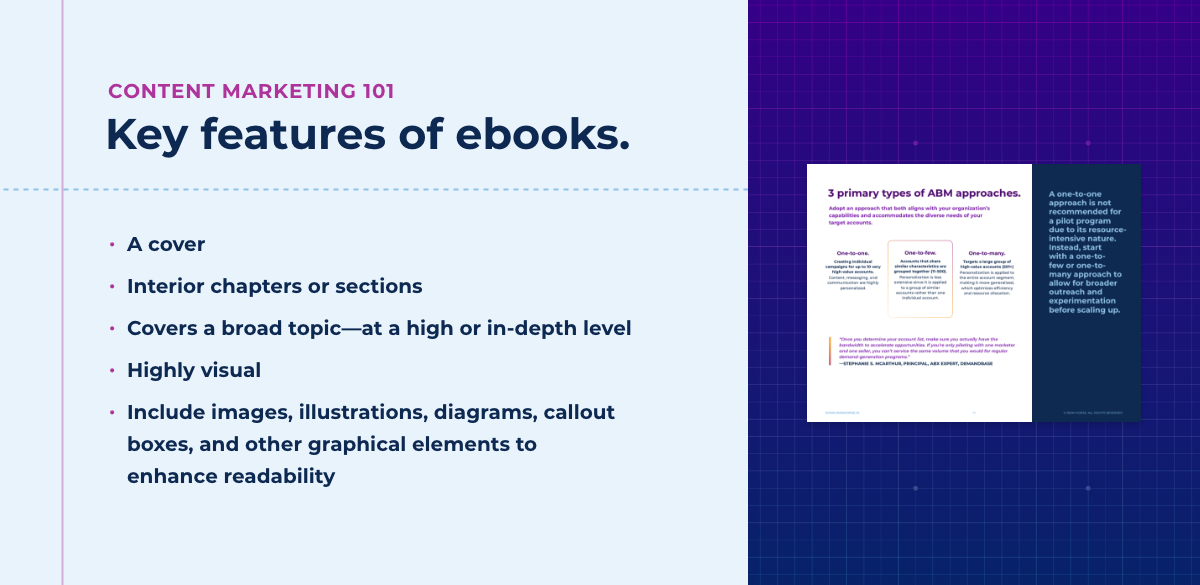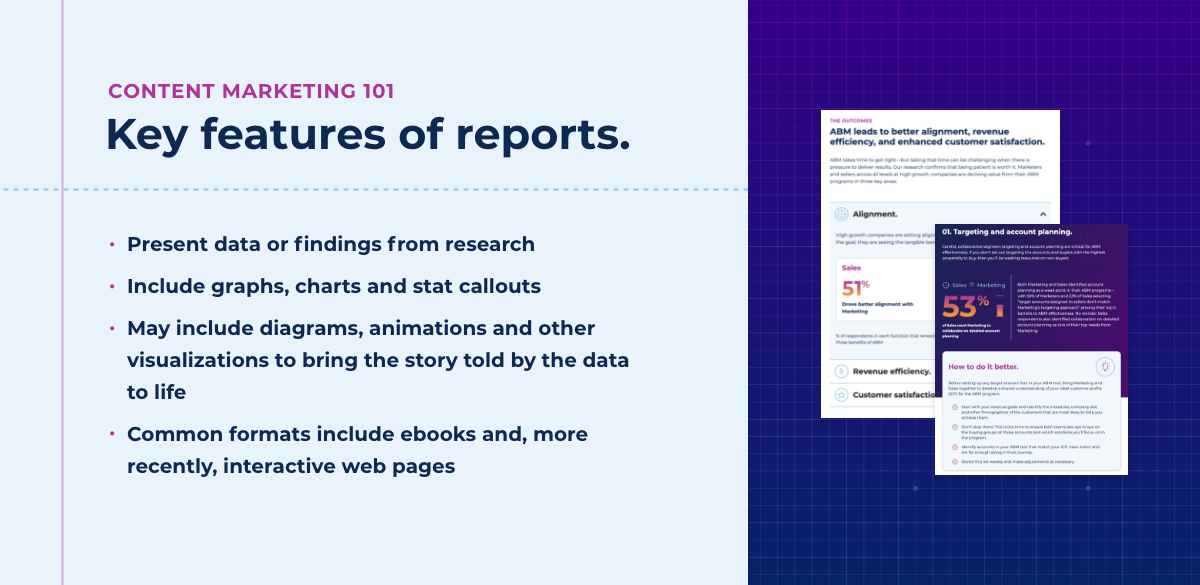Blog

Every year, Netline reports on the popularity of various content formats among B2B buyers. Ebooks reliably top the list, with guides, reports, white papers, cheat sheets, on-demand webinars and a few other formats filling out the top 10 in varying order.
Every year, this leads someone to ask the obvious question: What’s the difference between an ebook, a guide and a report anyways? It’s a distinction many content marketers grapple with when trying to promote a new piece of content. (We faced it ourselves when updating the tagging in our resource center.)
The answer, ultimately, comes down to reader expectations. Beyond technical definitions, these content labels carry with them connotations. Is your content practical? Serious? Does it teach something specific? What you call it helps convey its purpose to potential readers—both to get them to download it and to ensure they won’t be disappointed once they do.
The difference between ebooks, guides and reports—so you can decide what to call your content assets.
First of all, ebooks and reports are content formats. Guide refers to the type of content.
Content format. The house or packaging of the content. I.e., ebook, blog, webinar, infographic, listicle etc.
Content type. The purpose of the content. I.e., guide, instructional, thought leadership, etc.
As you can imagine, there’s quite a bit of overlap here. That’s why, if you’re browsing an organization’s resource center, you might see the same content pop up under multiple labels. This isn’t necessarily a problem … but it is confusing. Here’s my thought process when I’m deciding what to call different pieces of content.
When to call it an ebook.
Originally, ebooks were exactly what the name suggests—”books” in an electronic format. They were designed to be read from start to finish and often provided comprehensive information on a particular topic. Ebooks were often text-heavy, but they could also include images, graphs, and other multimedia elements.
However, today the concept of an ebook has evolved. Nowadays, ebooks are highly visual and come with a designed “cover.” They can be quite short, but typically have “chapters” or at least different content sections. According to Netline’s research, ebooks appeal to audiences at all stages of the buying journey, which is particularly fascinating, as the content format doesn’t say anything about its content type. I suspect ebooks remain the most popular content format because people expect them to be easy to consume.
“eBooks are the ultimate utility in content marketing offering a wide range of uses. From client featurettes to thought leadership, they can be used to present anything a business wants to feature.” Netline
At Iron Horse, when we release a survey report in the form of an ebook, we’re providing a fairly high-level look at our findings and what they mean for our audience of marketing and sales leaders, rather than a comprehensive presentation of the data. In essence, ebooks have evolved to become a flexible format that can be used to convey a variety of content types and styles beautifully.

When to call it a report.
Reports provide unbiased insights written without a sales or marketing intent. Reports are often formatted as ebooks, but their purpose is to share findings from surveys and other research and many report writers are finding that web pages with interactive elements can make this information more accessible to readers. (McKinsey’s 2025 Technology Trends Outlook report is a great example of how modern web experiences can make report content easier to navigate and digest. I love that they took the time to create a full PDF version as well, for those who want to go deep.)
While reports should include charts, tables, and other data visualizations, these are there to help readers access the data and trust the report's conclusions, rather than pure visual interest. Imagery, animations and illustrations should never be gratuitous and never distract from understanding. (This is true for all content, really.)

When to call it a guide.
When it comes to guides, the goal is to teach readers about a specific topic or provide them with a set of instructions. Guides aren’t restricted to a single format, but can be presented as ebooks, blog posts, webinars or even videos. This means you could have a piece of content that is both ebook and guide, which does complicate the Netline results a little.
“Guides are primarily positioned to establish authority. This format is designed to walk a reader through a topic or procedure step by step from start to finish.” Netline
While deciding whether to call your guide a guide or an ebook wouldn’t necessarily change your content, it could have an impact on your CTA. “Download our ebook” may have different results than “Download our guide.” This is a great variable to test in your next nurture or paid media campaign—or on your website!
Just remember that your audience will probably have specific expectations when reading something promoted as a guide. Make sure they’re learning something from that content, regardless of its final format.

The Iron Horse insight.
Ebook is a catchy term that makes buyers feel like they are getting something in exchange for their contact information, but ultimately, any content marketer’s goal is to provide valuable content that your audience needs in the format they prefer. So, whether it's an ebook, a report, or a guide, make sure it's clear, relevant, and addresses your audience's needs. As long as it aligns with the content, feel free to call it whatever is currently trending or whatever feels right.
Find more valuable tips about content formats and content marketing in our look at common content marketing mistakes (and what to do instead), and our “steal this” series featuring ideas for middle of funnel (MOFU) content and sales enablement content you can create today.
Subscribe to our blog.
Get unstuck with the most interesting business ideas and our insights delivered to your inbox.